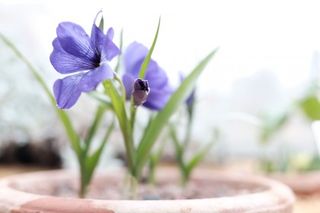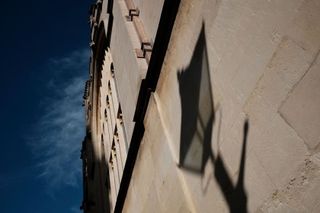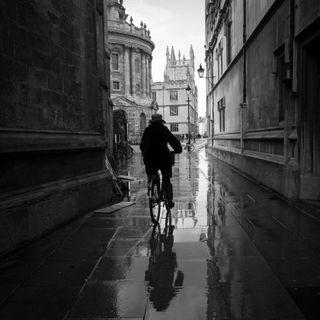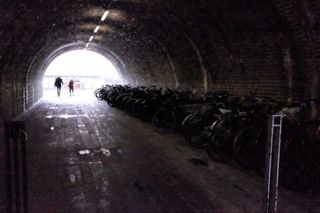Why you can trust TechRadar
As it's so small and neat it's easy to forget that the X70 has the same sized sensor as most SLRs and compact system cameras inside it. Nevertheless it does, and the combination of the APS-C format X-Trans CMOS II device, a prime (fixed focal length) lens and the EXR Processor II processing engine enable it to produce superb images with excellent sharpness that to match some interchangeable lens cameras. Raw and JPEG files both have a natural sharpness that largely avoids halos or excessive micro contrast.
Detail is maintained well across the image frame, even when shooting at maximum aperture and there's little if no sign of vignetting. Diffraction is also controlled well and images shot at the smallest aperture (f/16) have a good level of detail.

- The camera was able to focus on and reproduce the fine detail of this small flower. I set the exposure compensation to +3 to bring out the delicate nature of the petals and burn out the background. Click here for a full size version.

- The Multi metering system has coped well with this bright, highly reflective scene. Click here for a full size version.

- Classic Chrome Film Simulation mode produces pleasingly warm tones. Click here for a full size version.

- Using Average metering mode produced a nice contrasty image with a dark blue sky here. Click here for a full size version.
When all noise reduction is turned off, a hint of luminance noise is visible at 100% in some shadow areas of raw files shot at ISO 200, but chroma noise doesn't rear its head until ISO1600 – and it's minimal. By ISO 6400 this coloured speckling is obvious at 100%, but at A3 size (297 x 420mm or 11.69 x 16.54 inches) it's pretty subtle and only visible as a fine granular texture in even-toned areas of mid to dark brightness. These areas in simultaneously captured JPEGs look rather painterly at 100% but it's not excessive and images look good at A3 size.
It's only possible to shoot JPEGs at sensitivities higher than ISO 6400, maxing out at ISO 25,600. At ISO 12,800 images develop a diffuse glow which increases with each step-up in sensitivity. I would be inclined to restricted the print size of ISO 12,800 and 25,600 images to A4 (210 x 297mm or 8.27 x 11.69 inches) or smaller while ISO 51,200 is best avoided.
It would be nice to be able to be able to shoot raw files at these expansion settings as it should be possible to apply less aggressive noise reduction. Even if the chroma noise was problematic it should be possible to make attractively grainy monochrome pictures.
Images shot at ISO 100 look very similar to those shot at ISO 200, but the highlights burn out more quickly. If you can you're better off opting for ISO 200 and retaining the ability to record raw files.

- Despite the mixture of shade and fluorescent light the automatic white balance system has delivered a decent result. Click here for a full size version.

- In continuous focusing mode the X70 was able to keep this cyclist sharp, but I had to keep the active AF point over the subject. The image makes a nice monochrome conversion. Click here for a full size version.

- At ISO 51,200 details get lost, taking on a strong watercolour-like effect. Click here for a full size version.
As I mentioned earlier, during the course of my testing I didn't encounter any situations in which I needed to focus manually. The autofocus system is good, getting subjects sharp quickly in normal daylight. It can even keep up with quite fast moving subjects provided the active AF point is held in the right place. Step inside to lower light conditions and the focusing slows and hunts a little, but it gets the job done. When light levels fall further the backwards and forwards autofocus adjustment becomes more noticeable, but it's not excessive.
In continuous autofocus Wide/Tracking mode and with reasonable light the camera can keep even-paced subjects sharp, but it struggles with more erratic or very fast targets and as the light levels drop. It's not the ideal camera for shooting action, not least because of the wideangle lens, but it can be done.
I found that the X70's auto white balance setting does a very good job in most natural lighting situations, delivering pleasantly warm images in bright sunlight and natural looking results in overcast conditions. It also copes very well with mixed natural and artificial light, and better than average with artificial light – though you should expect a colour cast in some situations.
The X70's 256-zone Multi metering system assesses the image colour, composition and brightness distribution to suggest exposure settings, and while it works well, I found the Average metering system very reliable in a range of situations. This mode suggests exposure settings on the basis of the brightness of the whole frame and doesn't look at image colour or composition. I found it delivers nicely balanced exposures even in some high contrast conditions. There were a few occasions when I might have expected to use the exposure compensation control but the camera delivered a perfect result of its own accord. There were no occasions when I had to use it unexpectedly.

This swirly power bank might be the most sustainable battery pack on the planet

The next HomePod could be more like a soundbar according to this Apple patent – and it hints at fixing the HomePod 2’s biggest issue

Adobe's next big project is an AI that can upscale low-res video to 8x its original quality
